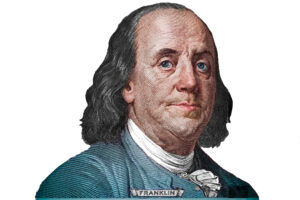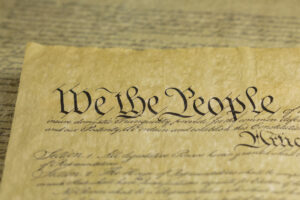“Neither Snow nor Rain…”: A Brief History of the Early United States Post Office
This is the first article in our series on the history of the USPS. In this series, we’ll explore the different stages and challenges the United States Post Office has faced over its 250 years of operation.
Subscribe to our newsletter to stay up to date with the USPS series, company news, and more!
It All Started in a Bar…
The first post office in what would become the United States wasn’t located in a dedicated building. It wasn’t in a government hall. It wasn’t even in a general store. The first American post office, established in 1639, was located in a Boston tavern.
The formal United States Post Office wouldn’t take shape until the 1770s. So, what came before? In a time without tracking numbers, logistics networks, or reliable transportation, how did mail get delivered at all?
It started with a patent, of course.
In that Boston tavern in 1639, the first official “notice of mail service” was posted. Over the next few decades, several colonies created their own early mail routes and informal postal offices. But things didn’t start to centralize until 1692, when Thomas Neale, an English businessman and politician, received a 21-year grant from the British Crown to establish a postal system across the North American colonies.
At that time, there had already been a few efforts to build a consistent mail system. But between the lack of standardized currency, high delivery costs, and the scarcity of post offices, most colonies just did what they could. Plus, most people were sending letters back to Europe—not locally.
A regular postal route between New York and Boston was only established in the 1670s, two decades before Neale’s patent. Once he was granted control, Neale effectively became the first version of a Postmaster General—until Benjamin Franklin stepped into the role in 1753.
That Time Benjamin Franklin Invented Overnight Shipping

While serving as Postmaster General of the northern colonies, Benjamin Franklin transformed the early American postal system. He accomplished two major things:
- System-wide inspection and overhaul: Franklin personally toured post offices across the colonies, identifying weak points and reorganizing delivery routes. He shortened them and aligned them with major roads and rivers, increasing efficiency.
- The birth of “overnight” delivery: Thanks to the improved and safer routes, riders could now travel at night—essentially allowing the first form of overnight mail delivery.
Under Franklin’s leadership, the colonial postal system became more organized, reliable, and even profitable. Regular mail schedules with Europe were established, and for the first time, the American colonies had a stable communication network.
Fun fact: In 1775, a “speedy” delivery from Philadelphia to New York City took about 33 hours. Today, that same route takes just 1 hour and 42 minutes by car.
Revolution in the Mail
Despite the improvements, many colonists still used private couriers to avoid paying postage to the British-run system. Tensions were rising, and in 1774, Franklin was dismissed from his post for political reasons.
Around the same time, former postmaster William Goddard began organizing an alternative network called the “Constitutional Post.” This independent postal system grew quickly between 1774 and 1775 and began to rival the official British postal service in both size and reach.
The Constitutional Post would become a crucial tool for the American Revolution. It allowed the Founding Fathers to send letters and organize in secret—out of reach from British surveillance. This shadow network laid the groundwork for a truly American postal system, one built on independence and communication.
What’s Next?
From tavern-based mail stops to revolutionary networks, the early history of the United States Post Office is filled with innovation, politics, and surprising milestones.
In the next article in our USPS history series, we’ll dive into how the United States Post Office Department was officially formed, and how it became a backbone of American expansion and identity.

